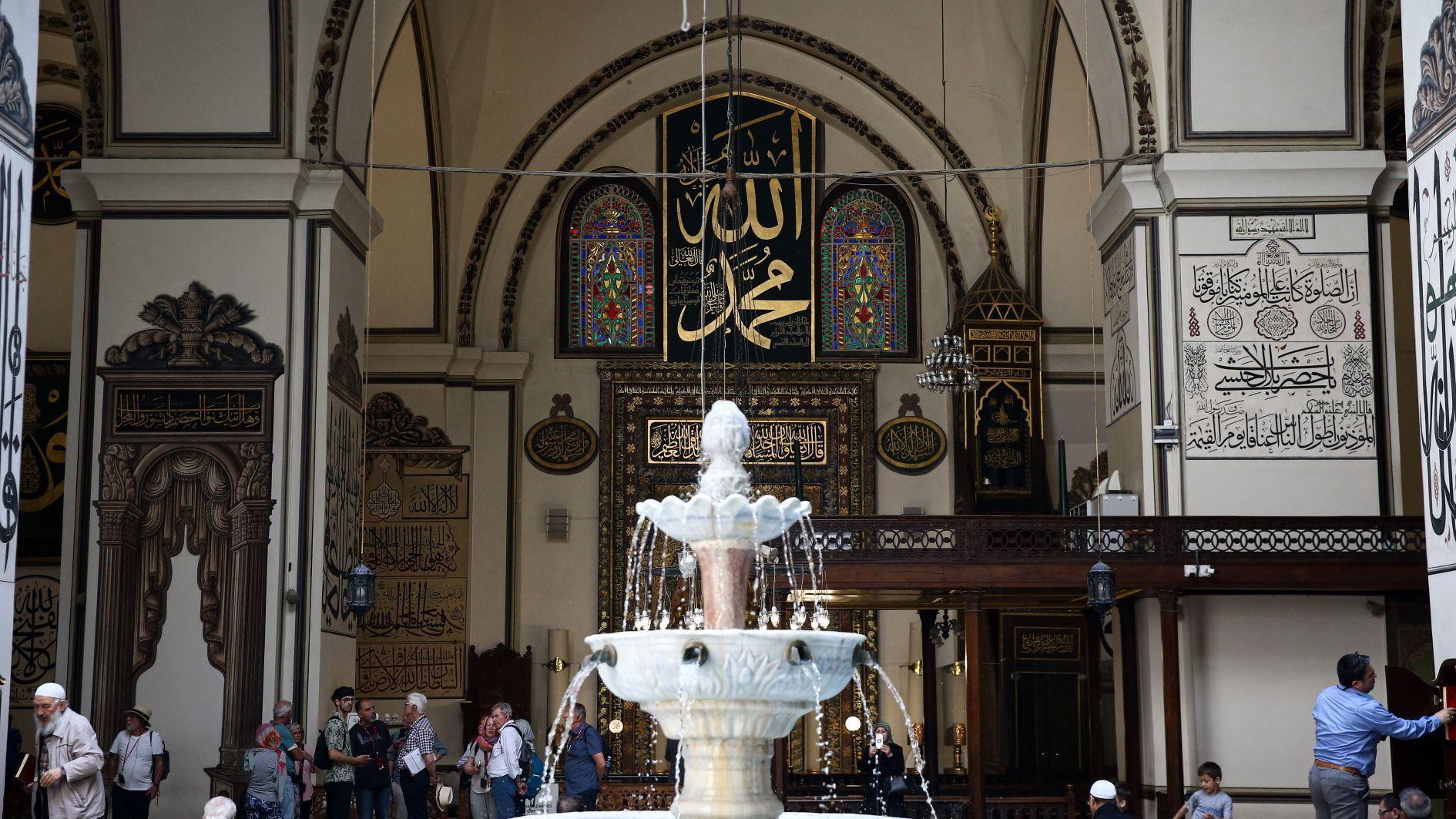
Visitors to Bursa’s Grand Mosque (Ulu Cami), one of the most important religious landmarks in the Turkish-Islamic world and a symbol of early Ottoman art, can now learn about its famous calligraphy works through QR codes displayed inside the mosque.
By scanning these codes with their smartphones, local tourists can easily access the meanings and history of the calligraphic inscriptions. The mosque, built between 1396 and 1399 by Ottoman Sultan Yıldırım Bayezid, was described by traveler Evliya Çelebi in his “Seyahatname” as “the Hagia Sophia of Bursa” and “the sultan of all mosques.”
The mosque, which attracts many local and foreign visitors, also houses sacred relics from Egypt and a 500-year-old cover from the Kaaba, gifted by Sultan Selim I after it was brought to Istanbul.
Ulu Cami is often called a “museum of calligraphy” because of the many inscriptions written by different calligraphers on its walls and panels. There are 192 pieces in total, 87 written directly on the walls and 110 framed panels, created by 41 different calligraphers using 13 different styles. These include verses from the Qur’an, “Ayat al-Kursi,” hadiths, the Names of God (Asma’ul Husna), and the names of the Prophet Muhammad and other important Islamic figures.
Some of the inscriptions are by well-known calligraphers like Abdülfettah Efendi, Kazasker Mustafa İzzet Efendi, Sami Efendi, and Mehmed Şefik Bey. One panel belongs to Sultan Mahmud II. Many of the inscriptions feature the Arabic letter “waw,” which is a special focus in Islamic calligraphy.
Hilmi Şanlı, the head of the association responsible for the mosque’s restoration and maintenance, said they launched this project to help visitors learn from accurate sources. “We had the calligraphy scientifically studied, and we transferred the information into digital form, written, visual and audio,” he said.
“We placed screens with QR codes at the mosque’s three entrances. Visitors can scan the codes to learn who wrote each of the 110 inscriptions, what they mean, and their history. We live in a digital age. We wanted to bring technology into the mosque and also help young people connect with this art, not just admire it from afar. We want new generations to discover what our ancestors created.”
Visitors can read the information or listen to it in Turkish. Şanlı added that they plan to add English and Arabic translations soon, as many tourists visit the mosque.
He also said this project could be a model for other mosques with important calligraphy, such as the Blue Mosque, Hagia Sophia Grand Mosque and Selimiye Mosque.
People who cannot visit in person will also be able to access the information online. “With this work, we can prevent myths, false information and confusion,” Şanlı said. “It’s a project based on academic research by university professors. Ulu Cami has many different styles of calligraphy. It is one of the largest calligraphy museums in Türkiye and even the world.”